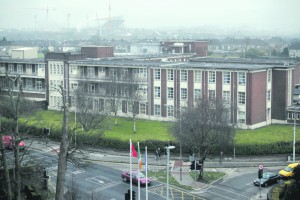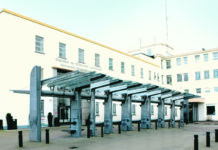

FUNDING has been allocated from the Government’s Capital programme to move Limerick’s maternity hospital services to a new site at the University Hospital Limerick (UHL) in Dooradoyle.
The Limerick facility is one of three maternity hospitals to share in a €100 million fund that has been ring-fenced for needed improvements.
Also included in Tuesday’s capital programme were allocations for the Adare by-pass, €42 million for the Shannon Crossing Bridge at Killaloe and the Lord Edward Street housing project which will provide 83 homes as part of the Limerick Regeneration programme.
The news comes as the Irish Nurses and Midwives Organisation (INMO) announced plans to hold a protest outside the Maternity Hospital this Friday.
Welcoming the funding for the relocation of the Maternity Hospital to Dooradoyle, Education Minister Jan O’Sullivan said it would mark a new era for maternity care in Limerick and surrounding counties and is very positive news.
The current maternity hospital, which is also known as St Munchin’s, was commissioned in the 1960s, having been designed to cater for about 3000 annual births. In recent years, it has dealt with between 4,600 and 5,500 births a year.
“Expert reports have strongly recommended the rapid phasing out of stand-alone maternity units because they lack some of the important facilities required,”
“This means that some critically ill mothers are transferred by ambulance to another hospital while their new-born infant has to stay in the maternity hospital. With the relocation of the maternity hospital to the main University Hospital campus Limerick will be at the forefront of maternity care provision,” stated Minister O’Sullivan.
UL Hospitals Group chief executive Colette Cowan, said that while mothers and babies had been expertly looked after for 50 years at the hospital, it was not built to deal with the current number of births.
“The fact that the building is 55 years old has also presented numerous environmental challenges for management and staff and we look forward to moving to a new state-of-the-art complex.
A site alongside UHL has already been identified and designs are already in train and no decision has yet been made on what will happen to the Ennis Road site.
Meanwhile, members of the Irish Nurses and Midwives Organisation (INMO) and SIPTU Nursing are to hold a lunchtime protest on this Friday outside the University Maternity Hospital on the Ennis Road from 1 to 2 pm.
INMO Industrial Relations Officer Mary Fogarty said that midwives were extremely concerned at the standards of care currently available at the hospital and feel they must highlight those concerns.
“They are not satisfied that the HSE, while aware of the increased activity and complexity at the hospital, has made adequate efforts to support the midwifery service immediately through increased staffing levels in all areas.
“There is a significant clinical skills deficit at the hospital with junior midwives being assigned to take charge of busy and complex maternity wards. This is compounded by inadequate midwife to mother/birth ratios.
“Ante/postnatal wards are often full with 28 mothers plus new-born babies with only two midwives which, inevitably, compromises the standards of care that can be provided”, she explained.
While efforts are being made to recruit up to 25 midwives, the INMO says this will not address the crisis in staffing at the hospital”.
Friday’s protest is the start of a campaign to have the HSE respond to the needs of the hospital and will be followed by a ballot for a work to rule in the coming weeks if matters are not resolved.
In a statement to the Limerick Post, the HSE said that they have been actively recruiting staff for the hospital.
“Staffing deficits at UMHL are recognised by all parties but UL Hospitals Group rejects any suggestion that our maternity services are unsafe for mothers and their babies.
“In common with other areas of the health service, UMHL has been dealing with legacy issues around the financial crisis, recruitment embargo and the loss of experienced staff through voluntary exit schemes. The hospital has also seen an increase in births and in the complexity of cases”.









